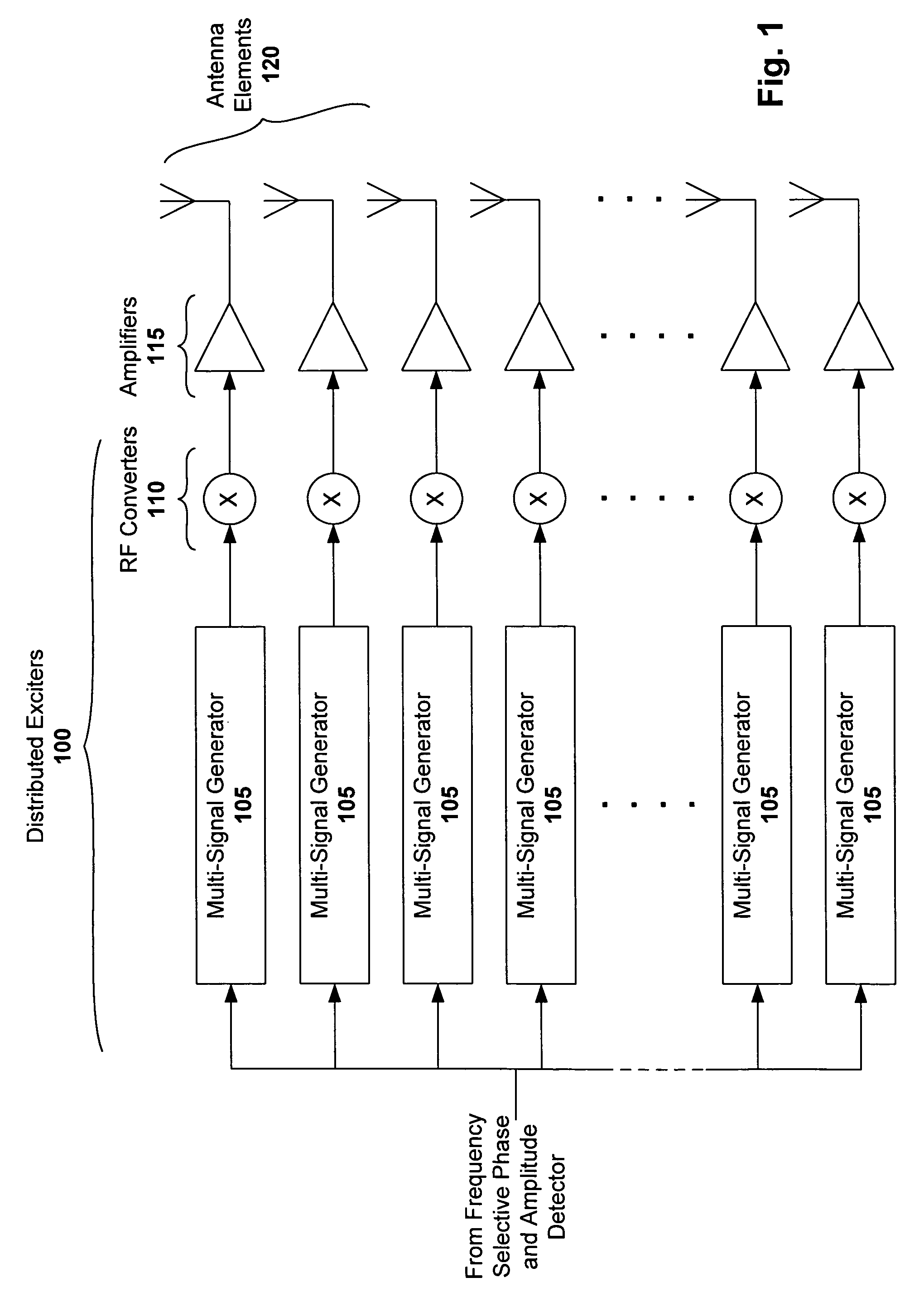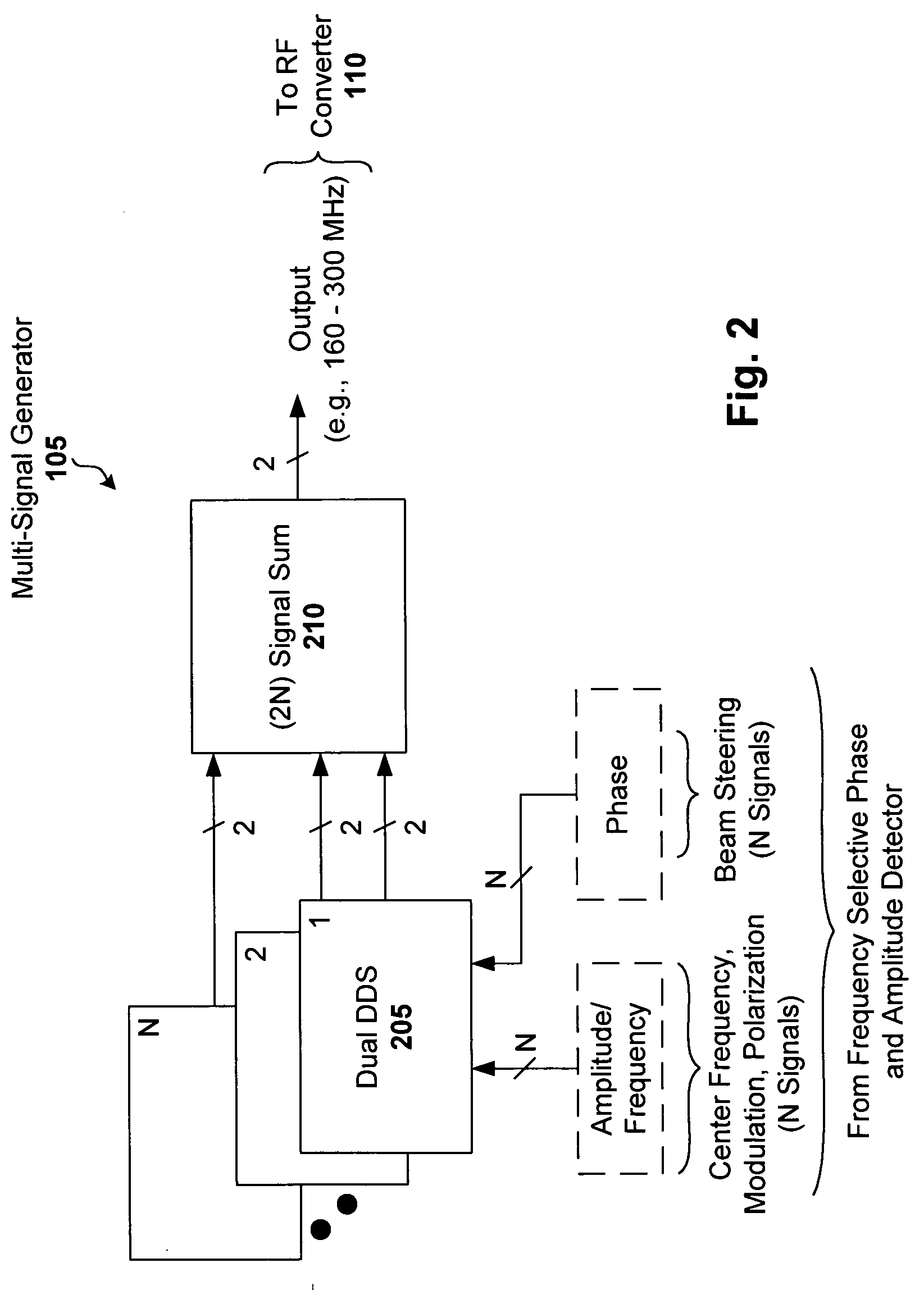Distributed exciter in phased array
a phased array and exciter technology, applied in the field of antennas, can solve the problems of increasing the complexity of the system implementation with conventional phased array architecture, reducing the degree of modularity and interchangeability of the system, and increasing the complexity of the feed network and support electronics of this type of jammer
- Summary
- Abstract
- Description
- Claims
- Application Information
AI Technical Summary
Benefits of technology
Problems solved by technology
Method used
Image
Examples
Embodiment Construction
[0016] Rather than extend conventional phased array beam steering and polarization technology to meet additional performance demands, an embodiment of the present invention is configured to simplify the RF hardware to the maximum degree possible by moving all of the beam steering, delay compensation (TTD-related), phase matching, amplitude leveling and polarization control functions to a highly modular distributed exciter with coordinated and precise phase and amplitude control.
[0017] Here, the phase characteristics of the array, its amplifiers and the RF distributing hardware can be characterized (as opposed to matched) for each element RF path and the results reduced to a digital phase compensation table with modulo 360 degree output (e.g., included in a direct digital frequency synthesizer chip). Likewise the requirements for beam steering verse frequency for each array element can also be pre-calculated to result in a phase offset for steering. Signal polarization control is ac...
PUM
 Login to View More
Login to View More Abstract
Description
Claims
Application Information
 Login to View More
Login to View More - R&D
- Intellectual Property
- Life Sciences
- Materials
- Tech Scout
- Unparalleled Data Quality
- Higher Quality Content
- 60% Fewer Hallucinations
Browse by: Latest US Patents, China's latest patents, Technical Efficacy Thesaurus, Application Domain, Technology Topic, Popular Technical Reports.
© 2025 PatSnap. All rights reserved.Legal|Privacy policy|Modern Slavery Act Transparency Statement|Sitemap|About US| Contact US: help@patsnap.com



